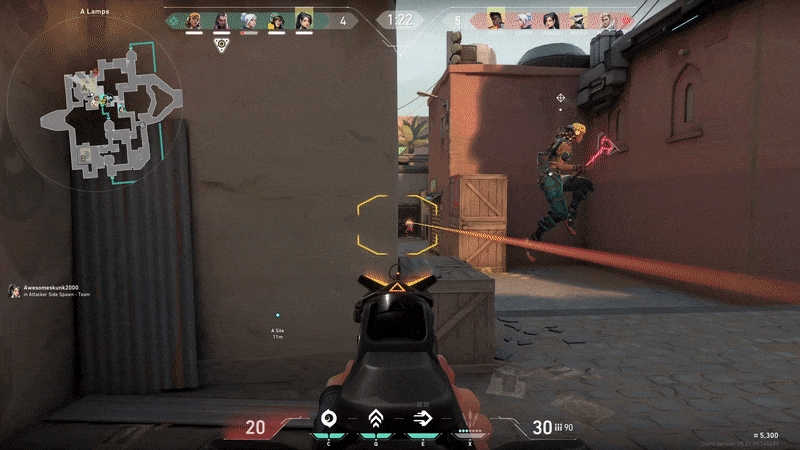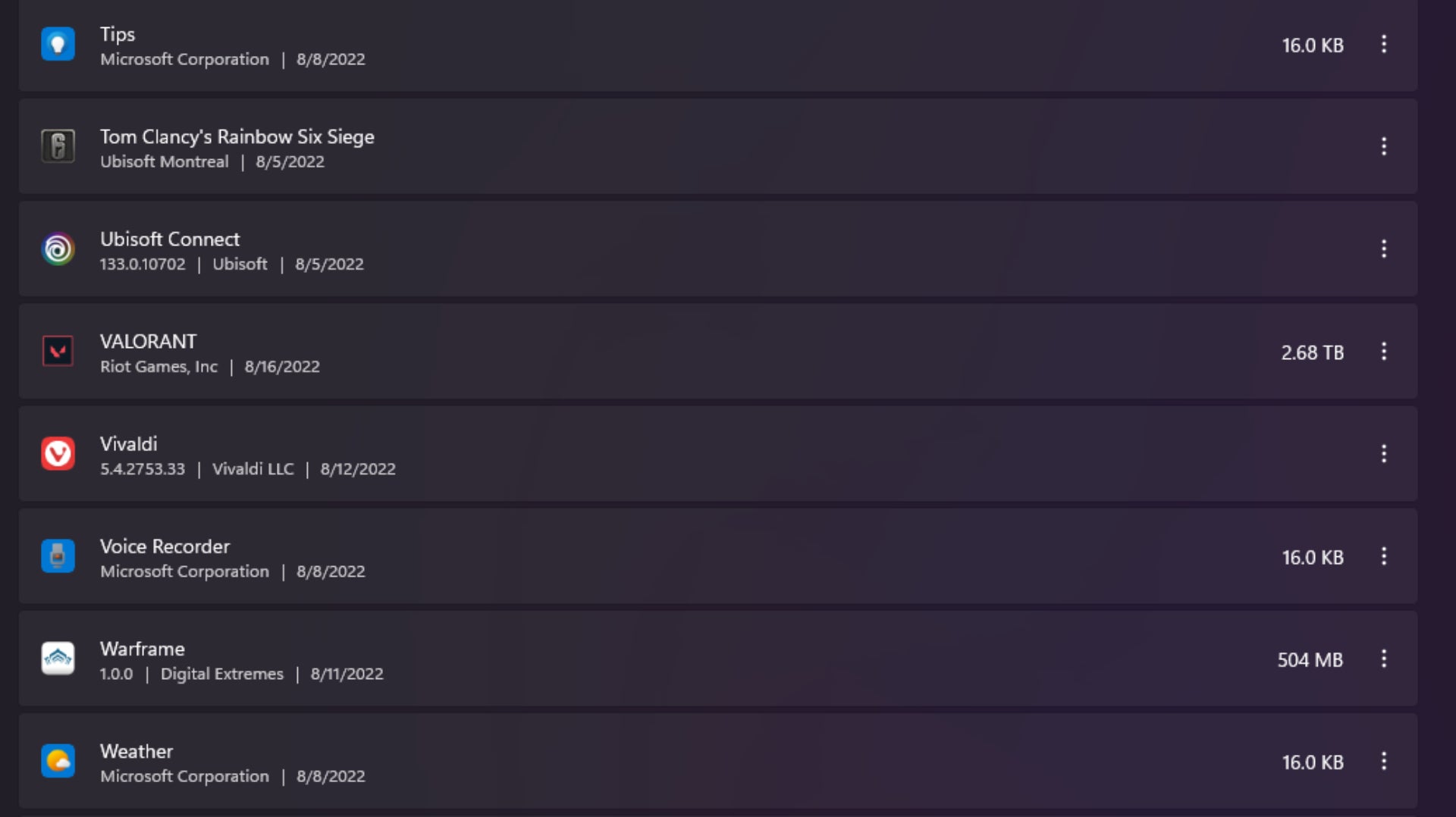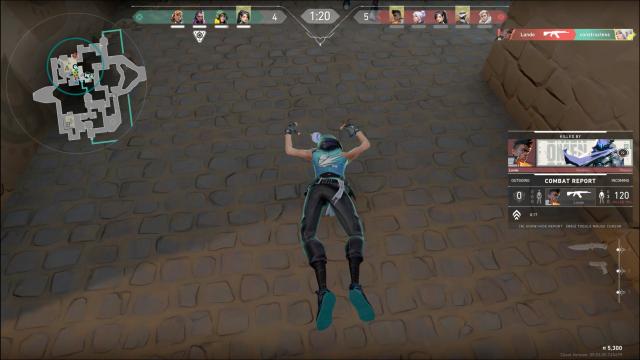I love shooters about as much as I love taquitos from 7/11, which is to say on far too many occasions I am walking out of such a store at 3 a.m. with…multiples of them…and a can of Monster energy, on my way home to play Halo or Siege or one of my shooter go-tos. Well, about a week ago, I decided that night’s game would be Riot’s Valorant. Little did I know I actually was on my way to a new CPU and graphics card because, well, maybe Valorant’s strict security/anti-cheat requirements bricked my computer. That’s still a mystery and the story would end there. Except it didn’t. With a repaired (?) computer, issues with Valorant’s installation actually pushed me to go outside and touch grass.
Valorant is a team-based shooter from Riot Games of League Of Legends fame. It’s sort of what you’d get if you mashed together Valve’s CSGO and Activision Blizzard’s Overwatch, with tactical gameplay, specific “hero roles,” and objective-based rounds. Released in 2020 for PC, one of the more recent topics of conversation concerns Valorant’s requirements on computers running Windows 11. Much like the operating system itself, Valorant requires a TPM chip and you must have secure boot enabled. This has not been without some critique and has certainly caused issues for many people.
A TPM requirement isn’t totally absurd. For those who aren’t aware, a TPM, or “Trusted Platform Module” does a whole number of things to ensure that any given computer has a unique identity and can’t be tampered with. Valorant requests that you have this when running Windows 11, but it seems like a pretty intense requirement for something that most games do not need to weed out cheaters and bad actors.
For the console-only players reading this, you are likely saying “this is why I don’t have a gaming PC,” and, sure, my situation and that of the countless PC gamers typing in “Valorant TPM fix” into Google definitely highlights one critical difference: Sometimes, no matter how great your PC is, you’re either becoming tech support or you’re looking for it.
The mystery of Valorant sending my pre-built PC to Microcenter for warranty-covered repairs is still strange. At first I installed the game. It warned me the game wouldn’t run because I didn’t have a TPM or secure boot enabled. That made no sense as the operating system I’m using, Windows 11, requires that very condition to run. So I uninstalled, figured I’d try later.
Well I tried later. After a mandatory restart from installing Valorant, I launched my computer to find I couldn’t connect to the internet. Yes, I checked my router and other devices worked just fine. It seemed to be that this machine just didn’t have functioning network capabilities anymore. Neat!
Given that it was a prebuilt I bought in replace of a part upgrade, thanks to GPU prices late last year, I took the machine back to Microcenter for repair and in a couple of days had a machine with a new CPU and GPU. Apparently those were the culprits.
After a solid week of intensive gaming on this machine, it seemed safe. That was until I tried to install Valorant again.
I chose to install the game via the Epic Games Launcher this time. Seemed to make sense. I don’t care for that particular store front or game management program, but in 2022, I see no reason downloading a video game from the Epic Games store shouldn’t work. And, well, Valorant installed and ran just fine!
There was a quiet, sustained moment of anguish and misery as I got into my first game of Valorant where I successfully landed a single kill and probably cost the team the game. I would have more impressions on the actual game itself…were it not for the fact that in Valorant it’s not unusual for a game to go for, oh, I dunno, 25 fucking rounds? Best of 13? Why?

I’ll unpack Valorant’s gameplay another time. I think I actually could get into it. I captured some footage of my single kill and went to upload it to my Dropbox to access it on my work computer and. Well. I was told I couldn’t do that. Apparently my C drive on Windows was maxed out. Mind you, this computer has a handful of Steam games, a fresh installation of Windows 11 after it died, and a smattering of files that should take up no more than 5gb at most. This shouldn’t be a problem.
A little bit of panic set in. What if there really was something wrong with the motherboard on this thing and it’s not reading storage correctly? What if there’s an issue with the drive? Did I just leave the screen recording over night or something?
I frantically checked all storage needs I could think of and then, right there in the Control Panel I found my problem. It was Valorant.
Valorant was taking up 2.19 terabytes.
Now, either Riot has discovered some super, quantum, string-theory level physics magic and figured out how to mine terabytes out of a single 930 gb solid state drive, or something is very, very wrong.

Simple fix, you’re likely saying to yourself right now. Right-click and uninstall! Well I did that.
Valorant is now taking up about 3.44 terabytes.
A quick Google search of this issue reveals that, in fact, this is an ongoing problem. Sometimes the launcher doesn’t think there’s enough space to update the game. Other folks take to Reddit to talk about the inexcusably large size it takes up. As far back as two years ago, folks started asking into the hive mind of Reddit “Does anyone else have a 3.42 (TERRABYTE) Valorant on their computer?” Some sanity has been restored by knowing that I’m not the only one.
A thread on the Linus Tech Tips forum reveals some insight, with user Helpful Tech Witch saying that “this is a known issue.” Turns out that “Windows will just keep counting Valorant’s folder size over and over” she explains.
Said forum post, however, is marked June 27, 2021. We are now in August 2022.
The game will not uninstall from the Control Panel and in my slightly bewildered, mildly annoyed, definitely stressed out state, I couldn’t find an uninstall option in Riot’s game launcher (which installs regardless of whether you use Epic Games Store or not.) It might be there, but I will tell you that it is not conveniently located anywhere it should be. You can’t right-click on Valorant and hit uninstall. You can’t go to a “My Games” section and look for an uninstall button. It’s not there.
Kotaku has reached out to Riot Games for comment on Valorant’s install requirements and complications.
Perhaps though it’s just the stress of worrying about another potential hardware issue on this computer, or it’s the fatigue of going through 23 fucking matches of a game I just wanted to try out.
Whatever’s going on, I was unable to uninstall Valorant and instead I found myself back at the 7/11, this time not buying taquitos, but instead a Gatorade to replenish the lost electrolytes from the brain ache this game has given me. Serenity now.

Leave a Reply